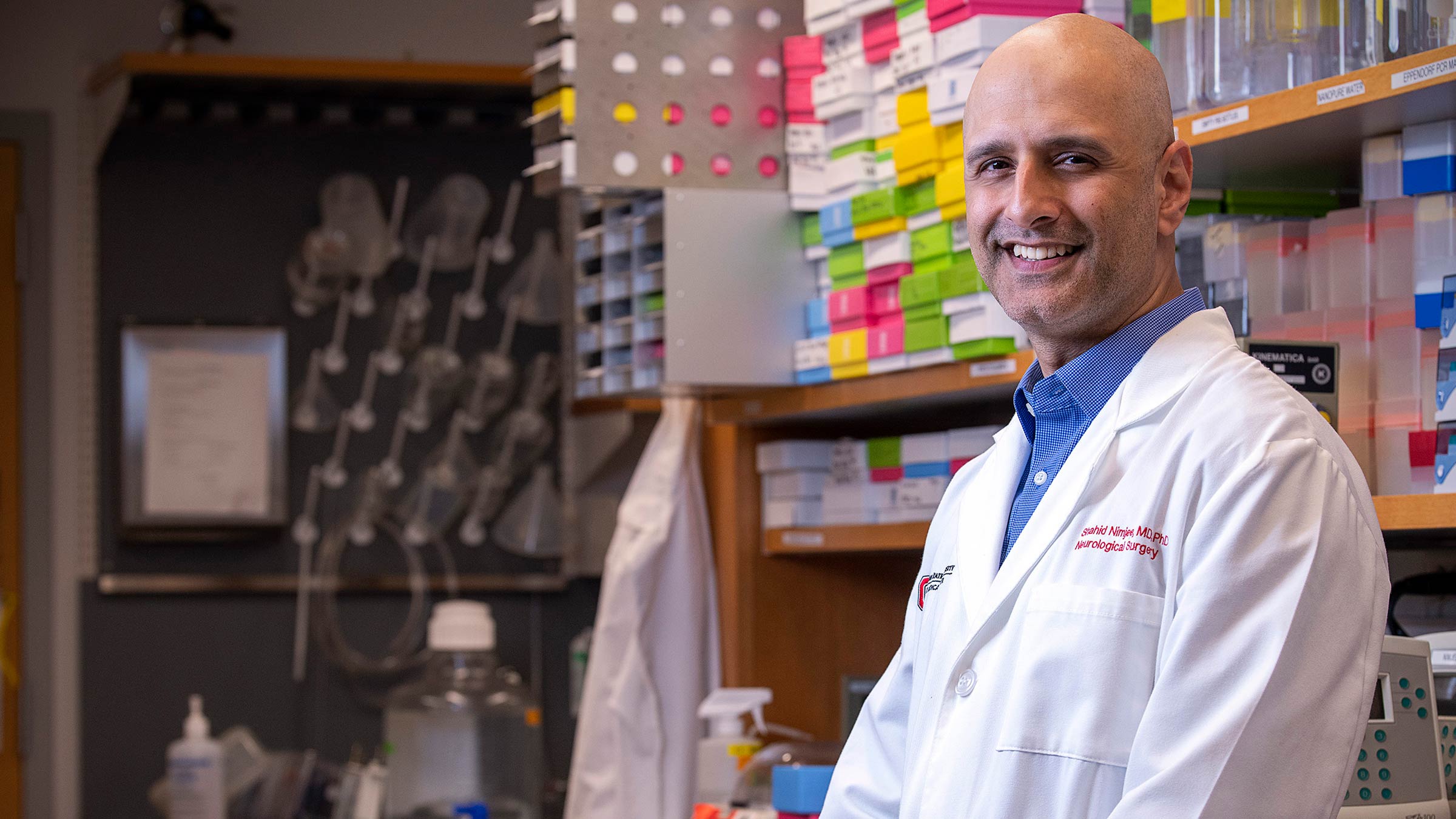
- Question What is stroke and why is it such a medical emergency?
-
Answer
Stroke stops oxygen from reaching the brain and causes brain cells to die immediately. It’s caused by a bleeding or clotting event that interferes with blood flow to the brain. When it comes to treatment, time is critical. Patients also must meet rigorous existing criteria to receive the two treatment options that doctors have in their arsenal: a clot-dissolving drug that must be administered within 3-4½ hours after stroke, and surgery to remove the clot, which can be performed up to 24 hours after the occlusion.
- Question Can you explain the difference between the two kinds of stroke, ischemic and hemorrhagic?
-
Answer
An ischemic stroke is when blood vessels to the brain become clogged. Eighty-seven percent of strokes are ischemic. A hemorrhagic stroke occurs when a blood vessel or artery bursts and leaks into the brain, interfering with the brain’s ability to function properly.
- Question What are the risk factors that lead to ischemic stroke?
-
Answer
High blood pressure is the most significant risk factor, followed by heart disease, high cholesterol, diabetes, smoking, obesity and birth control pills (oral contraceptives).
- Question How serious is ischemic stroke?
-
Answer
Very serious. A stroke happens every 40 seconds in this country. Knowing the signs of stroke is the first line of defense. Second is quickly getting a patient to the hospital for effective treatment, which can limit damage to the brain and increase the chance of a long-term recovery.
- Question What are the odds of survival?
-
Answer
Close to 25% of ischemic stroke victims die within 30 days of the initial stroke. By two years, the number jumps to close to 52% due to post-stroke complications and secondary illnesses.
- Question What are the warning signs of stroke?
-
Answer
Stroke can happen gradually, but most often one or more of these sudden symptoms will present: numbness or weakness in the face, arm or leg, especially on one side; confusion or trouble understanding other people; trouble seeing with one or both eyes; problems walking or staying balanced and coordinated dizziness; and severe headache that comes on abruptly.
If you experience any of these warning signs, call 911 immediately. Symptoms of a stroke should be treated as a medical emergency - don't delay calling for help. - Question Can the brain heal itself after an ischemic stroke?
-
Answer
The good news is, damaged brain cells can regenerate and create new cells, which is called neurogenesis. Recovery depends on many factors, including the part of the brain that's damaged, the size of the damaged area and how well the brain’s neuroplasticity processes work. Most recovery takes place in the first three months after a stoke, which is why patients begin intensive rehabilitation programs as soon as possible.
- Question How is stroke treated today?
-
Answer
Currently, there is only one drug treatment available — recombinant tissue plasminogen activator, or rTPA. It works by dissolving blood clots that lead to stroke, but its therapeutic window is short and not without risk as patients can develop a deadly hemorrhage in the brain after its use and rTPA is irreversible. What makes matters worse, only 10%-15% of stroke victims qualify for surgical removal of the clot.
- Question How is Ohio State working to improve treatment for ischemic stroke?
-
Answer
We have developed a novel thrombolytic as well as a reversal agent, designing the first on-off switch in drug development. One drug breaks apart the formed clot in the brain vessel in the first place and the other basically neutralizes the first drug if it did not do its job or if it causes bleeding.
- Question What is the potential of this new therapy?
-
Answer
Once approved, this drug would be the first alternative to rTPA in 25 years. This novel therapy has the potential to help 80% of patients as opposed to the 20% that we can help now. It will be a game changer that can turn stroke victims into stroke survivors.

Every stroke is different, and where you go for care matters.
Ohio State’s Comprehensive Stroke Center is at the forefront of stroke care and our teams are developing and delivering the most advanced and innovative treatments.
Learn more




